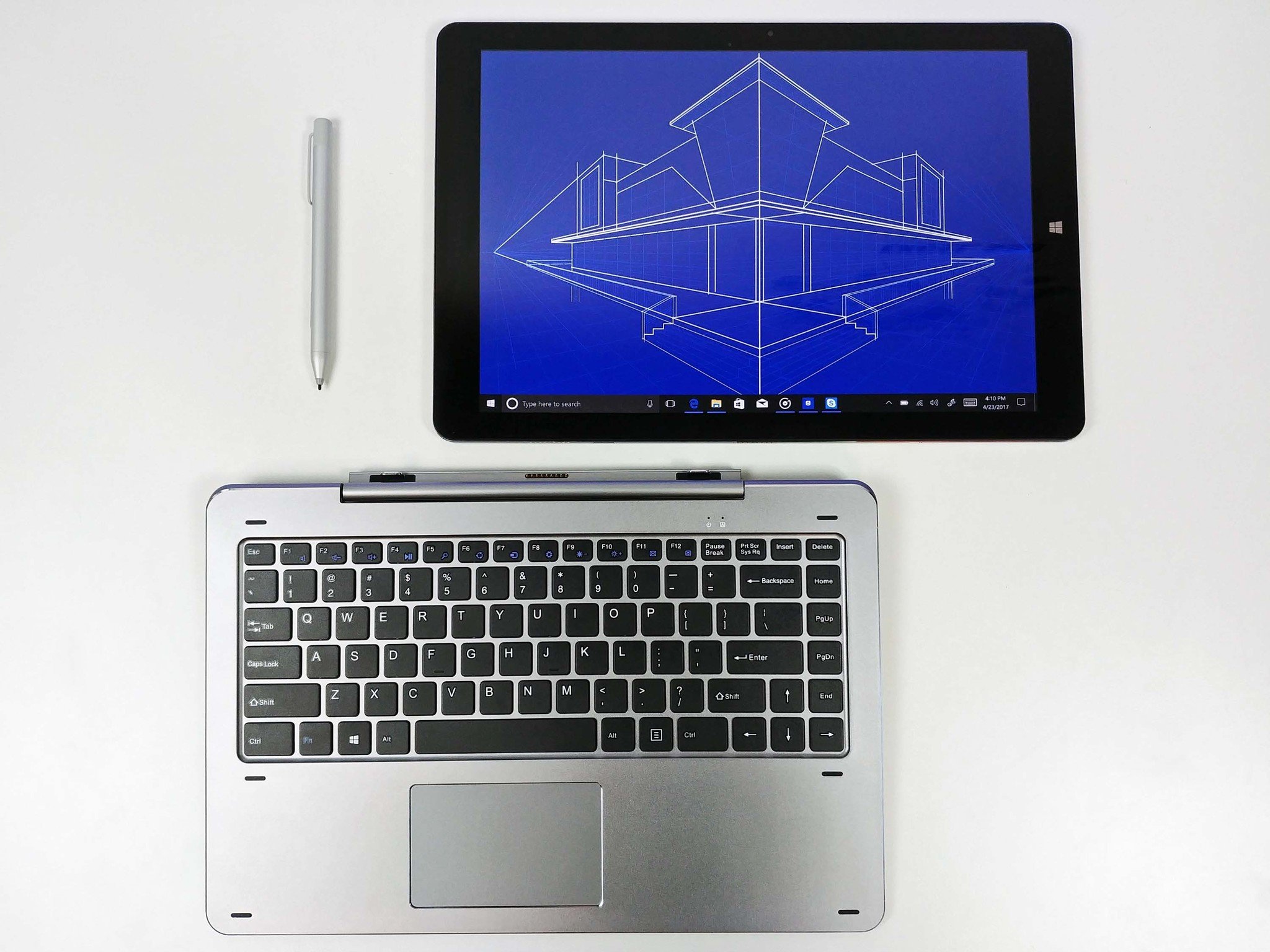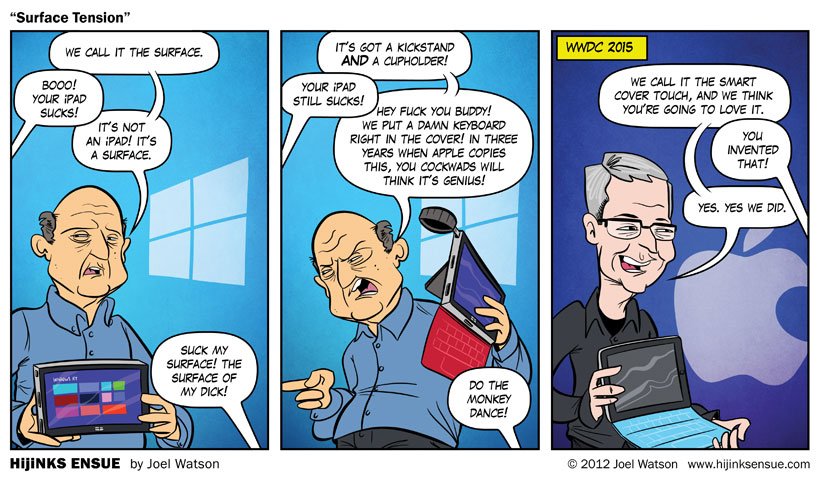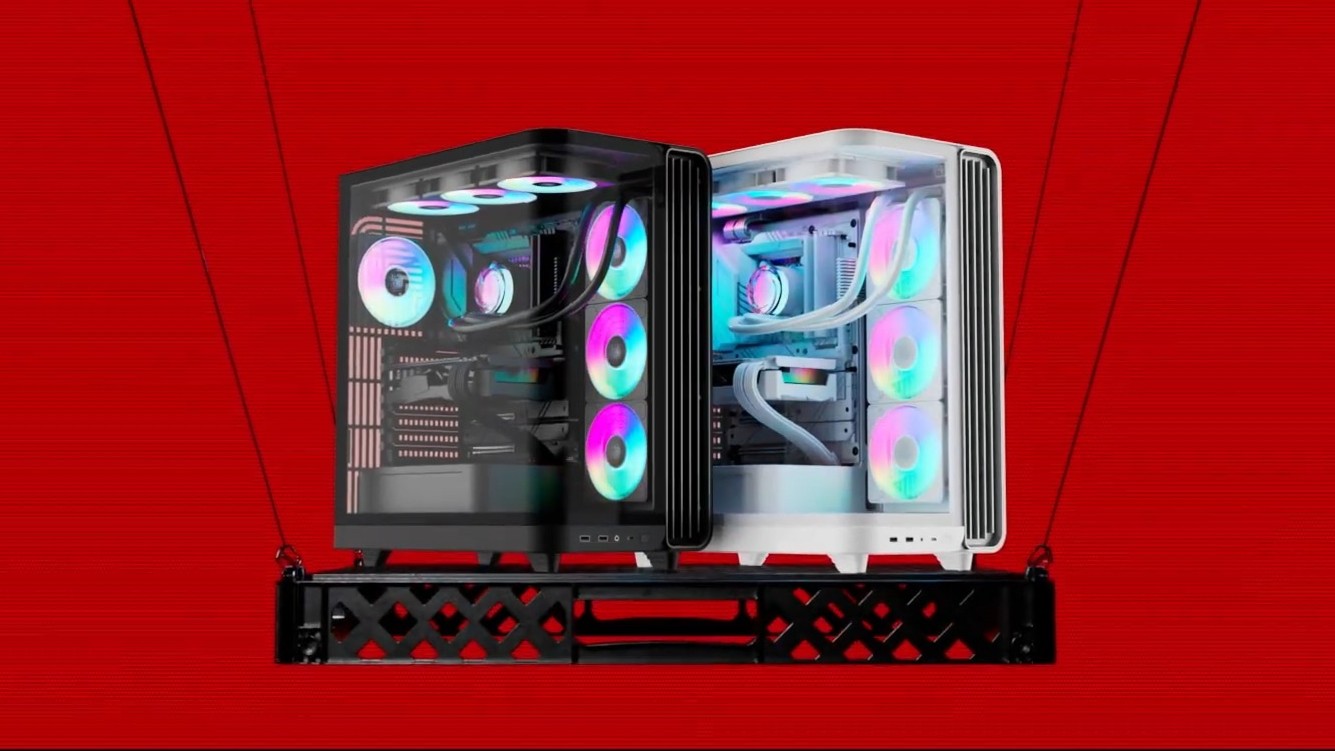Apple wins patent to basically make a Surface Book
In a new patent awarded to Apple, the company continues its march to remaking Microsoft's Surface Book and Surface Pro PCs, an idea once mocked by Apple's CEO in 2012.


What you need to know
- Apple recently won a patent for a hinged keyboard iPad accessory.
- The design, while semi-unique, results in a hybrid tablet-laptop computer.
- Despite criticizing hybrid computing devices in 2012, Apple seems poised to continue to emulate 2-in-1 PCs like Surface Pro and Surface Book
The running joke in tech media is something doesn't exist until Apple invents it (after everyone else has been doing it for years).
Whether digital pens, NFC, face recognition, or hybrid computing devices, Apple sits on the sidelines until it thinks it can do it all better. (My favorite Apple excuse was in 2012 when Apple Senior VP Phil Schiller said Qi-wireless charging is "more complicated" because it still must be plugged in.)
But to be fair, Apple often does master the execution of specific technology, which, when married with its software, results in a satisfying experience.
Now, in a new patent awarded to Apple, the company seems poised to continue its march toward a Surface Pro-like (or even Surface Book) device. (Despite its clever design, Microsoft discontinued Surface Book in 2021 in favor of the superior Surface Laptop Studio). According to Patently Apple, who broke the story, the design is focused on a hinge "that provides multiple installation modes that could deliver superior flexibility for users."
Diving into the Apple patent, the hinge lets an iPad-like device couple to a keyboard accessory by slotting into a magnetic element that holds the device in place (along with some physical support). The iPad could also be reversed with the display backside out so that when the device is folded closed, the whole contraption works like a thicker tablet, possibly boosting battery life.
The "magnetic element" could also support the Apple Pencil and a connection interface for accessories such as a camera, projector, microphone, or light.
Dropping the accessory tie-in bit and the connector concept doesn't look radically different from what budget-PC maker Chuwi released in 2017 with the $400 Hi13.
All the latest news, reviews, and guides for Windows and Xbox diehards.
Of course, the more significant point to all of this is the observation that Apple is walking back its famous quote in 2012 from its CEO, Tim Cook, who made a snarky comment about converged Windows 8 PCs, noting:
"…anything can be forced to converge, but the problem is that products are about tradeoffs, and you begin to make tradeoffs to the point where what you have left doesn't please anyone. You can converge a toaster and a refrigerator, but those things are probably not gonna be pleasing to the user."
While there is some truth to Cook's comments (Windows 11's tablet experience is still behind Apple's iPad OS), it is also accurate that Microsoft's vision of convertible PCs was not some gimmick. Instead, 2-in-1 PCs were a genuinely transformational design that had a massive influence over mobile computing in the last decade. I even argued that Surface Pro was one of the most important PCs of the last decade.
Indeed, Apple has been slowly transforming its iPad Pro into a Surface Pro for years, starting in 2015 with its Smart Keyboard Cover and Pencil, and most recently with its hinged 2020 Magic Keyboard for iPad Pro. Going one step further with a keyboard deck and hinged mechanism seems evident at this point.
Perhaps more interestingly, the new Apple patent shows a macOS-like OS on the iPad-like device. Apple has been rumored, for years now, to be converging macOS and iPadOS, although nothing concrete has yet come forth except macOS supporting iOS apps announced in 2019. Whether Apple goes down that route remains to be seen, but it certainly seems feasible.
Unsurprisingly, Apple also has another patent that lets users connect two iPads to form a dual-screen tablet not too dissimilar from Microsoft's 2019 (but never released) Surface Neo. And Bloomberg columnist Mark Gurman noted just a few months ago that Apple is also developing a 20-inch iPad-MacBook hybrid device with a foldable screen slated for 2026 (right after it invents the foldable phone in 2025).
Of course, we've already had one PC with a foldable display, and a few more are coming this year with 16 to 17-inch displays, including one from ASUS. That can only mean that Apple users will dismiss the idea right until 2026 rolls around and suddenly they think differently.

Daniel Rubino is the Editor-in-chief of Windows Central. He is also the head reviewer, podcast co-host, and analyst. He has been covering Microsoft since 2007 when this site was called WMExperts (and later Windows Phone Central). His interests include Windows, laptops, next-gen computing, and wearable tech. He has reviewed laptops for over 10 years and is particularly fond of 2-in-1 convertibles, Arm64 processors, new form factors, and thin-and-light PCs. Before all this tech stuff, he worked on a Ph.D. in linguistics, performed polysomnographs in NYC, and was a motion-picture operator for 17 years.



